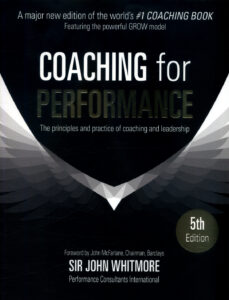I got asked a great question by a new client this week: “Should I have business meetings with my team? I keep reading different views and don’t know whether meetings are a good or a bad idea.”
The truth is ‘both’ sides of this argument are right – or neither if you prefer.
Or in plain terms: Good meetings are good and bad meetings are bad. And if you don’t know whether yours are good or not – they’re probably in amongst the bad ones.
If you stop and think about it critically, bad meetings share certain traits and foundations. To the extent that if you approach them in a certain way, you can almost guarantee they’ll be bad.
Read on and I’ll share with you the 5 big mistakes that guarantee a meeting will be a waste of time.
Why would we need them at all?
There are certain things that require constant repetition in any good business: strategy, culture, progress towards a big audacious goal. Without which attention and focus wavers.

Think of it this way: have you ever had a spring clean of your garage, kitchen or shed? Didn’t it look great afterwards? A place for everything and everything in its place. Aaah.
What did it look like a year later? A complete mess, right?
Very few people would conclude that the spring clean was ineffective let alone a waste of time. Most would conclude they just needed to do it more often – or get better at mess-prevention!
When I run a strategic alignment session with clients the uplift in energy, focus and productivity is tangible.
But of course, it wears off.
You need meetings because keeping the main thing the main thing is the main thing.
These mistakes will make your business meeting a bad idea
I recognise that some people can turn this into an artform – and a very long article. I was once in a meeting where I dug an actual hole in the back of my thigh to stay awake. And still failed.
But if you stopped and took a critical look at it, there would be 5 main issues with the structure or approach.
1) The (real) purpose of the meeting isn’t clear
A good question has both purpose and progression – and so does a good meeting. Stating very clearly what the meeting is designed to cause – the impact it needs to have – sharpens the minds of those attending. And it keeps the agenda ‘tight’ as it’s easier top spot herrings of any colour.
This focus is only heightened if the exact outcome is quantifiable. And if the relevant scores are visible and clearly communicated.
2) There are too many people involved
There’s a corporate cliché which states that you should never have a meeting which needs more than 2 pizzas to feed it. There are exceptions (sales meetings for example) but overall, there’s a lot of sense to this. The ideal size would be no more than 4 or 5 – and effectiveness will fall dramatically with every additional person.
As the old saying goes, “A committee is a group which keeps minutes and loses hours”.

3) Ideas are there to be discussed, not acted upon
If more than one person is responsible for something it won’t get done. In ‘bad meeting’ world it’s very possible for 4 or 5 people to all agree something is a great idea and must be done – and it not actually get done.
If you want to have a more productive meeting, assign any specific task to one person. Even if it involves others, a single person has the responsibility for making sure it happens.
Then set deadlines and make sure they have the relevant authority in terms of budget and people.
4) Zero repercussions
It’s all very well asking people to take responsibility for a task, but what happens if they have a sneaking suspicion that no one will ever mention it again? And if it does get mentioned, they won’t be in any serious trouble for not having done it. (They can cope with being sighed at).
Everyone involved needs to approach this with the mentality that if you accept responsibility for doing something, it will be done. And if it doesn’t get done, the reasons for that will be discussed.
I’ve never worked with a high-performing team that doesn’t do what it says it will.
5) Not have a chairperson
Some people talk too much, and some too little. If you don’t have someone to bring people back to the point in question, and to entice the quieter ones to speak, your meeting will become a soap-box for your extroverts. (Statistically, this probably includes you you).
Like-wise, some people are pre-disposed to love new ideas straight off the bat, and some will typically see the problem with any idea or solution. Both of these people play a crucial role in a business and the chairperson needs to get them to play nicely. I reference how to do this in a different article How to Harness the Power of Brainstorming.
So if you absolutely want to run a bad meeting…
If the meetings you run break these rules, whatever snazzy-sounding model you come across and use will not work.
If you decide to approach meetings as a way of increasing focus and energy, and driving improvements, any of them will work.
Here are 4 models that many clients have used to run more effective meetings. And I’ve added a note for each one to give a view about where and when you should use them in your business.
The “G.R.O.W.” model

This is lifted from Sir John Whitmore’s great read Coaching for Performance and is a staple for many coaches – as it should be for clients. It helps clarify issues and drive thinking towards solutions.
Goal:
What is the desired outcome? You’ll want to spend some time on this as the first idea will rarely be the best one. Really think about the underlying root cause or the ultimate result you’re trying to cause.
For example, you decide you want to do some staff training. This isn’t the goal. You then decide that it’s because you want your team to be friendlier and more helpful when dealing with clients. This isn’t the goal either. The real goal is to increase the number of 5* reviews. Keeping your eyes on this will elevate the rest of the discussion.
Reality:
What is the current reality? Numbers (KPIs) are especially important here to make sure your emotions are not obscuring the truth – in either direction. It’s fine to listen to your gut – just make sure it’s backed up by hard stats.
For example, you want to develop your marketing strategy and activities. You’ll no doubt have a sense of what’s working and what isn’t. Great. Now work out your Average Cost Per Lead from each marketing activity you currently invest in and see if that agrees with you.
Obstacles & Options:
These are in reality 2 separate stages and should be taken sequentially. (I guess the G.R.O.O.W. model wouldn’t have been as catchy). List every possible problem and challenge. Often writing them down makes them easier to tackle.
And then every available Option.
As ever with any type of brainstorming exercise, resist the urge to ‘pre-filter’ silly ideas – they may turn out to be valuable.
Way forward:
What are your intentions. This should include Who, When and Will. In other words a firm commitment from the individual concerned that it will happen.
NB: This is a great model to use if someone is ‘stuck’ and not sure what they need to priortise.
The “L.I.O.N.” agenda
This is a great format for ongoing weekly / monthly meetings. The letters stand for:
Last week:
An update from each person on the progress they made with the actions they were accountable for from the last meeting.
Issues:
What issues did each person face in this process and what have they done / decided they should do to solve them.
Opportunities:
This could be connected to the ongoing goal or a ‘side’ opportunity that might be taken advantage of.
Next Actions:
What specific actions does each person commit to achieving by the following week.
NB: This works best when attached to a quarterly goal.
The Daily Huddle
The clue is in the title of this one. It is a daily, quick, relatively informal meeting – usually first thing in the morning.
Set the mood and the focus:
The leader of the meeting starts by setting the tone for the day and also the context in terms of the bigger goals.
Individual Acknowledgement and Accountability:
Each person shares their biggest win since yesterday’s huddle and identifies what they’ll be shooting for in the coming day. This should be as specific as possible. Ie I’m going to get a meeting in the diary with x.
At this stage they can also share the biggest obstacle / challenge they face and get help with that.
Review the Numbers:
This is more than just sharing the metrics for that team. The point is to be clear on the trajectory of the numbers – whether you’re on target or off. This should chime with the mood you set, and some choose to do this earlier in the meeting.
Focus areas and priorities:
This is to remind your team of whatever has slipped out of focus. For example, to capture all data on the CRM – a perpetual complaint because it’s one of those jobs that rarely gets done without a reminder.
NB This format works well for sales teams or all-company meetings for smaller businesses.
The EOS Level 10 Meeting
This is taken from a book that a number of clients have adopted as their bible: Gino Wickman’s Traction.

Segue (5 minutes):
Start with each person sharing one piece of good news – both personal and professional. It starts the meeting off on a positive note.
As an alternative you could start with a WIFLE which stands for What I Feel Like Expressing. It’s a valuable technique to get everyone switched on. It also stops you cracking on with the agenda if someone has something going on that you ought to know about.
Scorecard (5 minutes):
Review key metrics from your company dashboard – or one specific to that meeting. Each person should give an update on the metric they are responsible for. If there’s a number on there that no one is directly responsible for, either ditch it or allocate it.
Rock Review (5 minutes):
Review progress on quarterly priorities. Resist the urge to disseminate as this will reduce clarity. This is a simple case of whether you are ‘on track’ or ‘off track’. Fans of Measure What Matters by John Doerr will recognise these as ‘Objectives’ backed up by ‘Key Results’.
Customer / Employee Headlines (5 minutes):
Share news of any significant updates, issues and wins. This keeps everyone in the loop – which is as valuable as keeping people in the dark is corrosive.
To-Do List (5 minutes):
Review actions from the previous meeting. Each person gives an update on the things they were responsible for doing after the last meeting. This visibility and follow-up acts as an easy way to increase accountability.
IDS (Identify, Discuss, Solve) (60 minutes):
Address and resolve issues following the I.D.S. model. Identify, Discuss, Solve.
List all issues that need to be resolved – preferably in writing. Some of these will inevitably get ‘kicked down the road’ as you try to keep focus on the quarterly goal. After you have prioritised, discuss each one and list the solutions you can act upon. Assign responsibility and set deadlines.
Conclude (5 minutes):
Recap and rate the meeting. Summarise the meeting, review actions to be taken, by whom and by when. Then rate the meeting and how you can improve it.
In our meetings to review our GrowthClub business strategy and planning days, the coaches stick to a simple model of ‘Liked Best, Liked Least, Next Time’ for this.
NB: This model is great for use with a senior leadership team / board meeting
In conclusion
A meeting is what you choose to make it.
What I would say, at the risk of being philosophical, is that in business and life things tend towards chaos if left to their own devices. Think about your shed.
So, I guess that means if you want bad meetings, just wing it.
If you want great meetings, go do that.
In a previous article I wrote about time management tools and offered the view that all of them are great, but none of them will work if you’re not prepared to be disciplined.
Great meetings should be a catalyst for positive action and change. If you’re not prepared to be that person yourself, and to challenge your team to be the same, no model can help you.
In the end, you get what you tolerate.
Tim
P.S. If you’re ready to take action and would like to talk about your approach to meetings – or business in general – please do get in touch.





